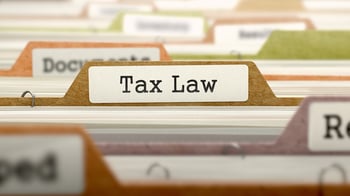If you own a rental property and you’re looking to sell it, now might be a good time. However, without a bit of planning, the capital gains taxes you’ll owe will take a big chunk out of your sales proceeds.
The good news is, IRS tax code 1031 allows you to defer your capital gains and depreciation recapture taxes by selling your investment property and acquiring a similar property. This is known as a 1031 exchange, or a “like-kind” exchange.
Not interested in acquiring the same type of property you already have? That’s okay! Under Section 1031, most real estate is considered “like-kind” to other types of real estate. For example, you could exchange a residential rental home for a piece of vacant land, an industrial property, or many other types of investment real estate and still qualify for a 1031 exchange.
You can also exchange your investment property for a Delaware Statutory Trust (DST). This passive investment option frees owners from the day-to-day hassle of property management. Interested in learning more? You’re in the right place! The following guide will explain the basics of DSTs and show you how you can use them to defer your capital gains taxes.What is a DST?
A Delaware Statutory Trust (DST) is a limited-purpose legal entity that is established under Delaware state law. Under this unique structure, a DST sponsor acquires properties that are owned by the trust. The sponsor then creates an “offering” which allows investors to purchase a “beneficial interest.” In this arrangement, the trust owns all of the assets and the investors own shares of the trust.
DST investors are completely passive. The trustee is responsible for all active management including arranging financing, collecting investment funds, and hiring a property management company to handle the day-to-day maintenance. The trustee also makes all decisions regarding buying and selling the underlying properties.
Investors have no voting rights. In exchange, their liability is limited to the equity they’ve invested. There is no personal assumption for liability on property-level debt and there are no LLC costs to bear.
DSTs typically pay out returns on a monthly basis, providing investors with consistent, passive income. The dividends and income investors receive are passed through and taxed on an individual level, rather than on a group level.
 Using a DST for a 1031 Exchange
Using a DST for a 1031 Exchange
A 2004 IRS ruling stated that properly structured DSTs are allowed as replacement properties in a 1031 exchange. The process is almost exactly the same as it would be if you were exchanging your property for another piece of investment real estate.
• Step 1 – engage with a qualified intermediary (QI) who will facilitate your property exchange
• Step 2 – sell your relinquished property to a third-party buyer
• Step 3 – sales proceeds are transferred directly to the QI
• Step 4 – the QI uses the proceeds to purchase the DST
• Step 5 – you receive the DST interest
While these steps may seem simple, there are some important deadlines you’ll need to meet. First, you’ll have 45 calendar days from the day you transfer your relinquished property to “unambiguously identify” your replacement property in writing to your QI. You’ll also have 180 calendar days from the day you transfer your relinquished property to close on the new property.
When directly purchasing a piece of real estate, meeting these deadlines can sometimes be a challenge. However, choosing a DST as your replacement property is often simpler and without the potential surprises that can derail your timeline. This provides a turnkey solution for investors who no longer have the time, energy, or expertise to actively manage real estate investments.
Matching Equity and Debt Requirements
 One of the complexities of a 1031 exchange is the requirement to match or exceed both the equity and debt held in the relinquished property. Investors who wish to maximize their tax deferral using a 1031 exchange must:
One of the complexities of a 1031 exchange is the requirement to match or exceed both the equity and debt held in the relinquished property. Investors who wish to maximize their tax deferral using a 1031 exchange must:
1. Purchase a replacement property that is of equal or greater value then the relinquished property and
2. Reinvest 100% of the net sales proceeds into the replacement property, including the mortgage (debt) that you paid off when selling your relinquished property
While finding a piece of real estate that meets these requirements can be a challenge, it’s often far easier to structure a DST purchase to meet your exact needs. The structure of a DST provides a fractional ownership of the debt that is already prepackaged into the investment, creating greater flexibility.
You can also purchase a DST with either all or a portion of the sales proceeds from your relinquished property and you can purchase multiple DSTs. This allows you to structure your replacement purchase to meet your unique requirements – almost down to the penny.
We hope you enjoyed this short guide to using a DST to defer your capital gains taxes. If you would like to learn more, please download our complementary eBook, “Using DSTs for a 1031 Exchange.”
This is for informational purposes only, does not constitute individual investment advice, and should not be relied upon as tax or legal advice. Please consult the appropriate professional regarding your individual circumstance.
Because investor situations and objectives vary this information is not intended to indicate suitability or a recommendation for any individual investor.
Potential cash flows/returns/appreciation are not guaranteed and could be lower than anticipated.
There are material risks associated with investing in DST properties and real estate securities including liquidity, tenant vacancies, general market conditions and competition, lack of operating history, interest rate risks, the risk of new supply coming to market and softening rental rates, general risks of owning/operating commercial and multifamily properties, short term leases associated with multi-family properties, financing risks, potential adverse tax consequences, general economic risks, development risks, long hold periods, and potential loss of the entire investment principal. Past performance is not a guarantee of future results. Potential cash flow, returns and appreciation are not guaranteed. IRC Section 1031 is a complex tax concept; consult your legal or tax professional regarding the specifics of your particular situation. This is not a solicitation or an offer to sell any securities. DST 1031 properties are only available to accredited investors (typically have a $1 million net worth excluding primary residence or $200,000 income individually/$300,000 jointly of the last three years) and accredited entities only. If you are unsure if you are an accredited investor and/or an accredited entity please verify with your CPA and Attorney.
Investment advisory services offered through Bangerter Financial Services, Inc. A state Registered Investment Advisor. Registered Representative and securities offered through Concorde Investment Services, Inc. (CIS), member FINRA/SIPC. Bangerter Financial Services, Inc. is independent of CIS





.png?width=273&height=103&name=Brokercheck%20(1).png)

Comments